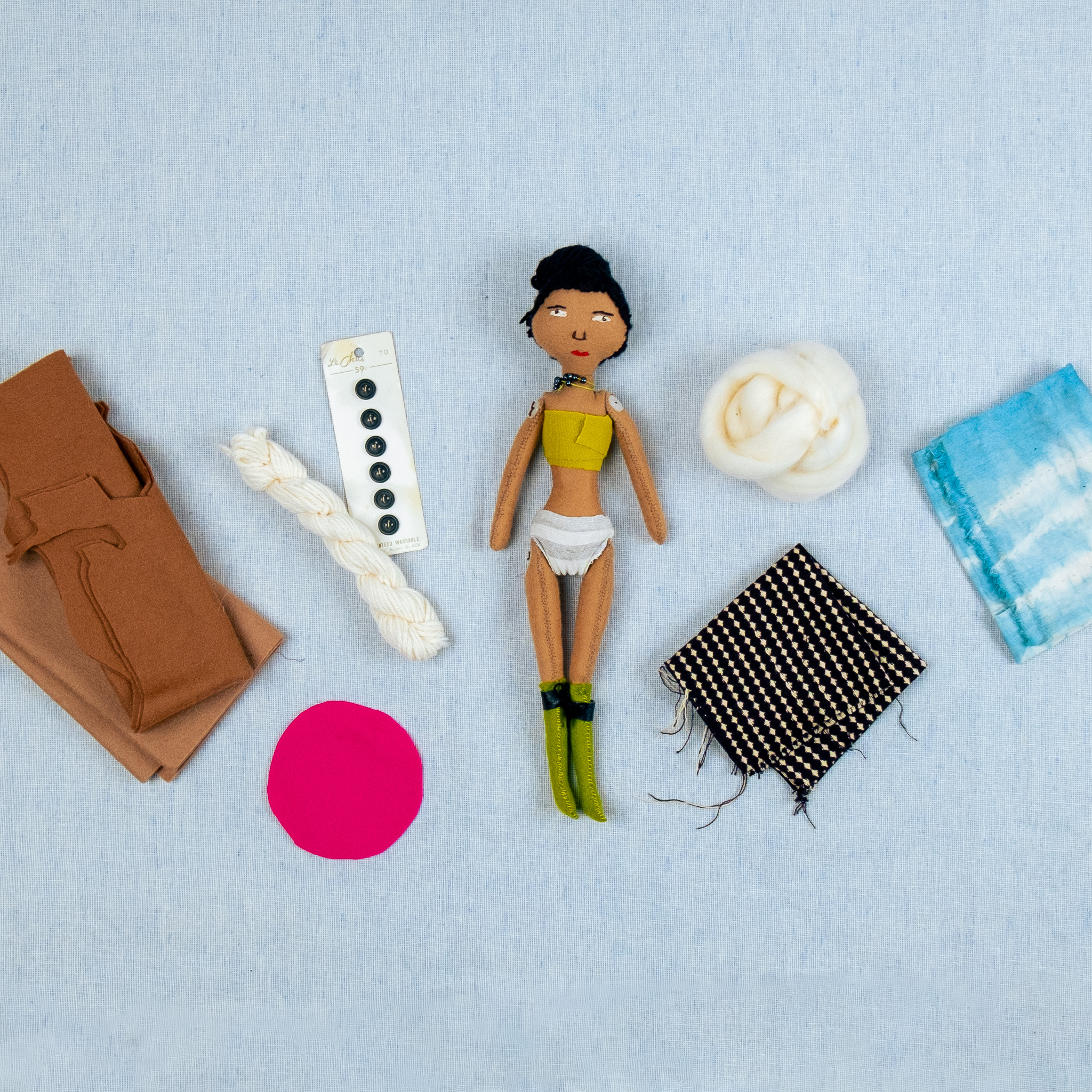
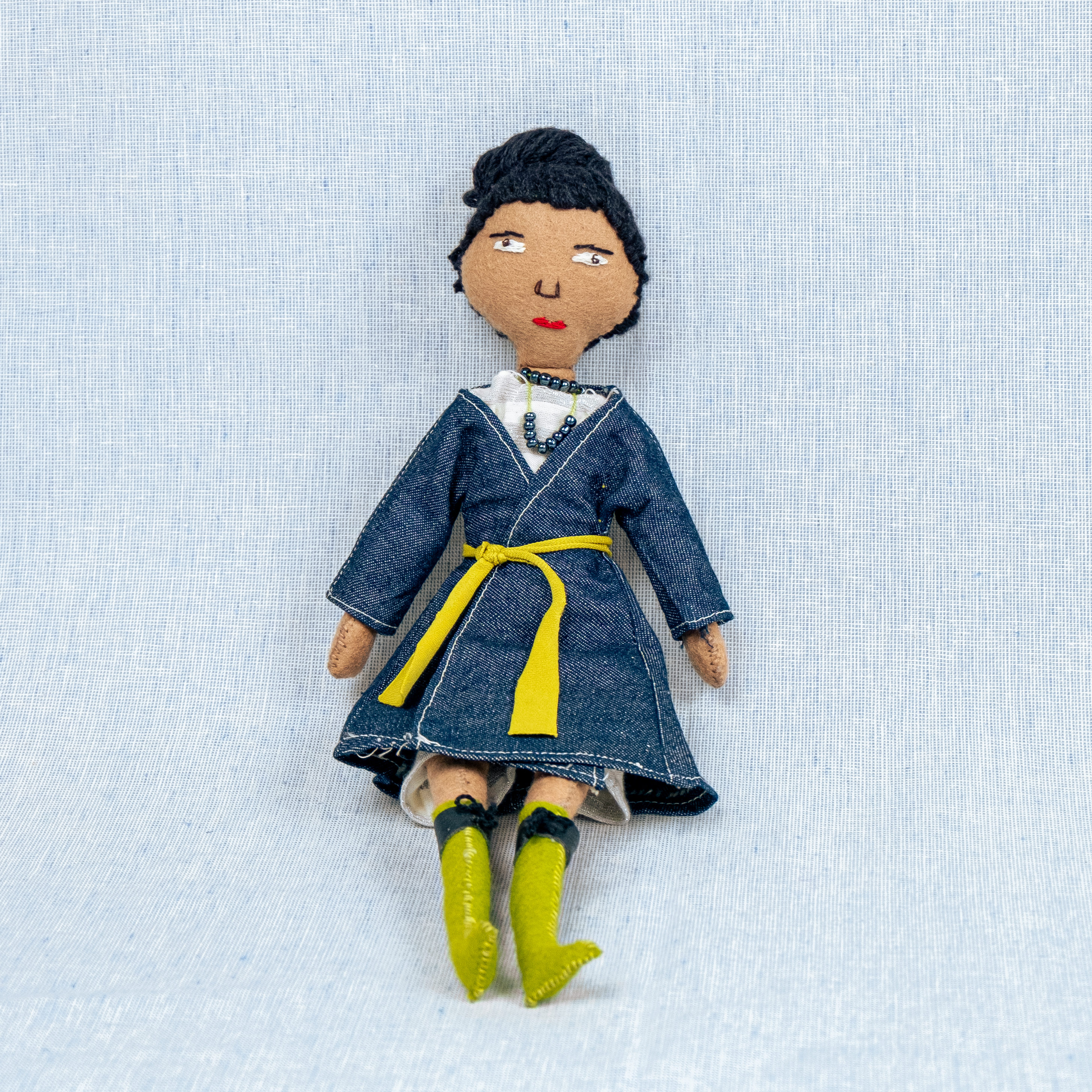
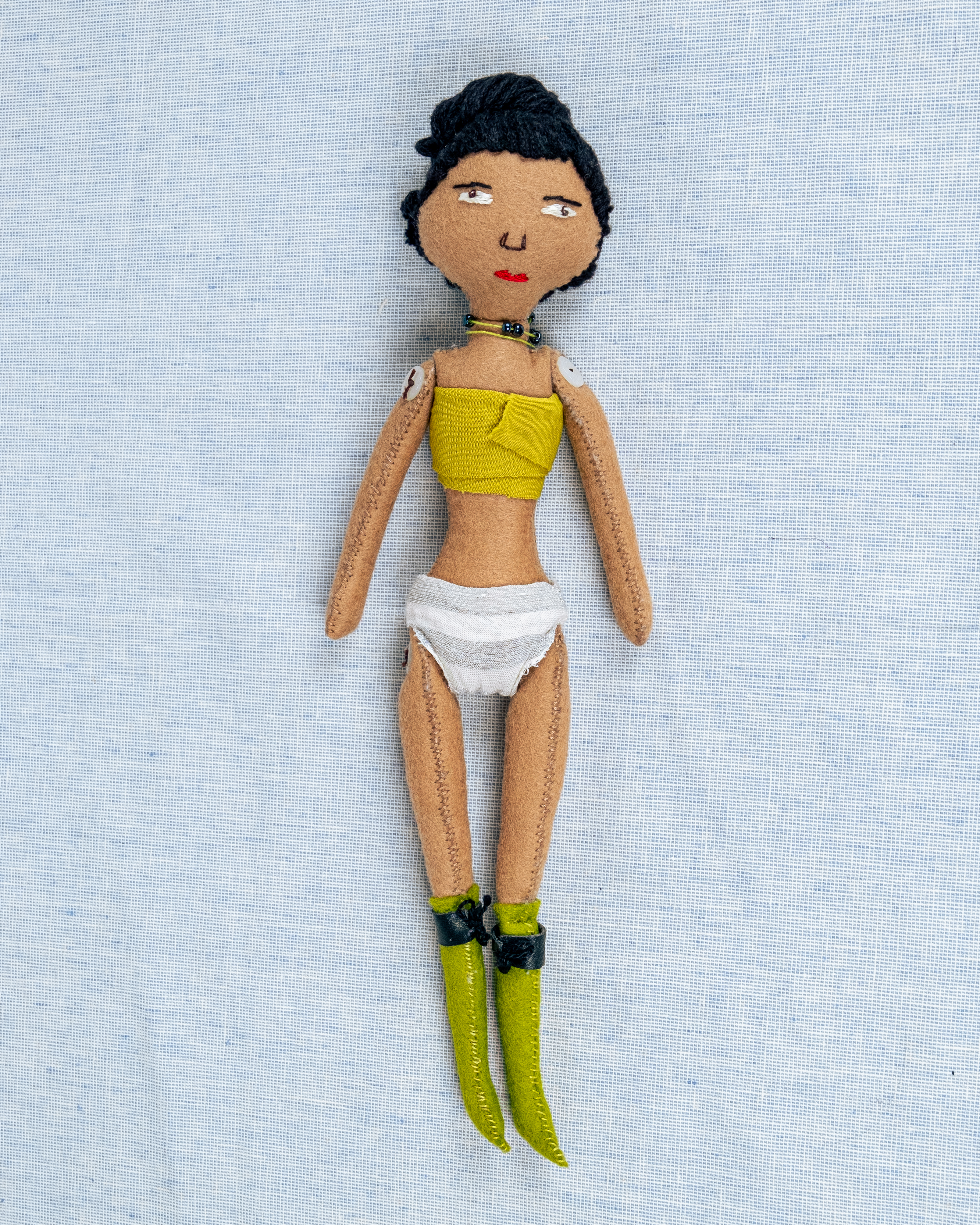
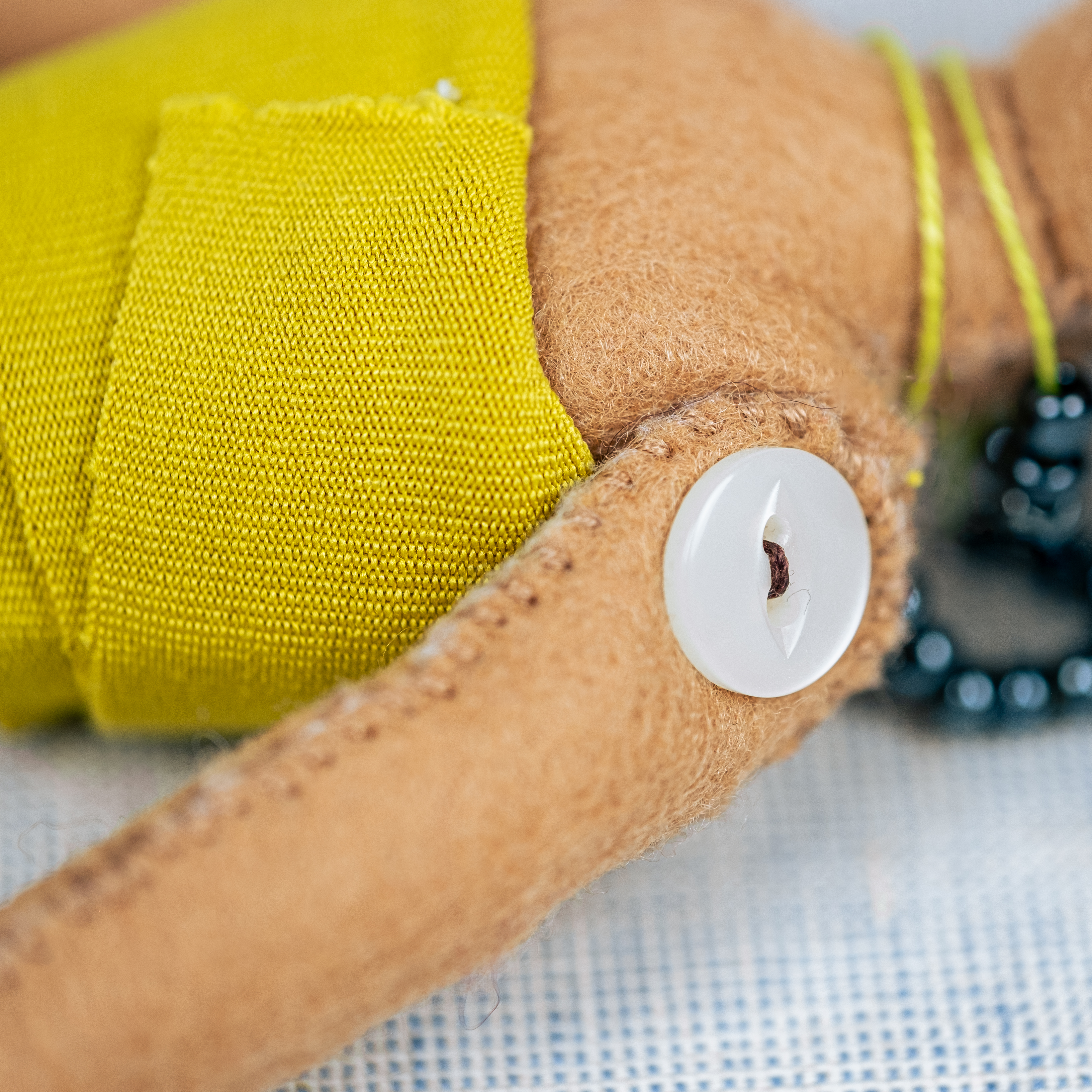
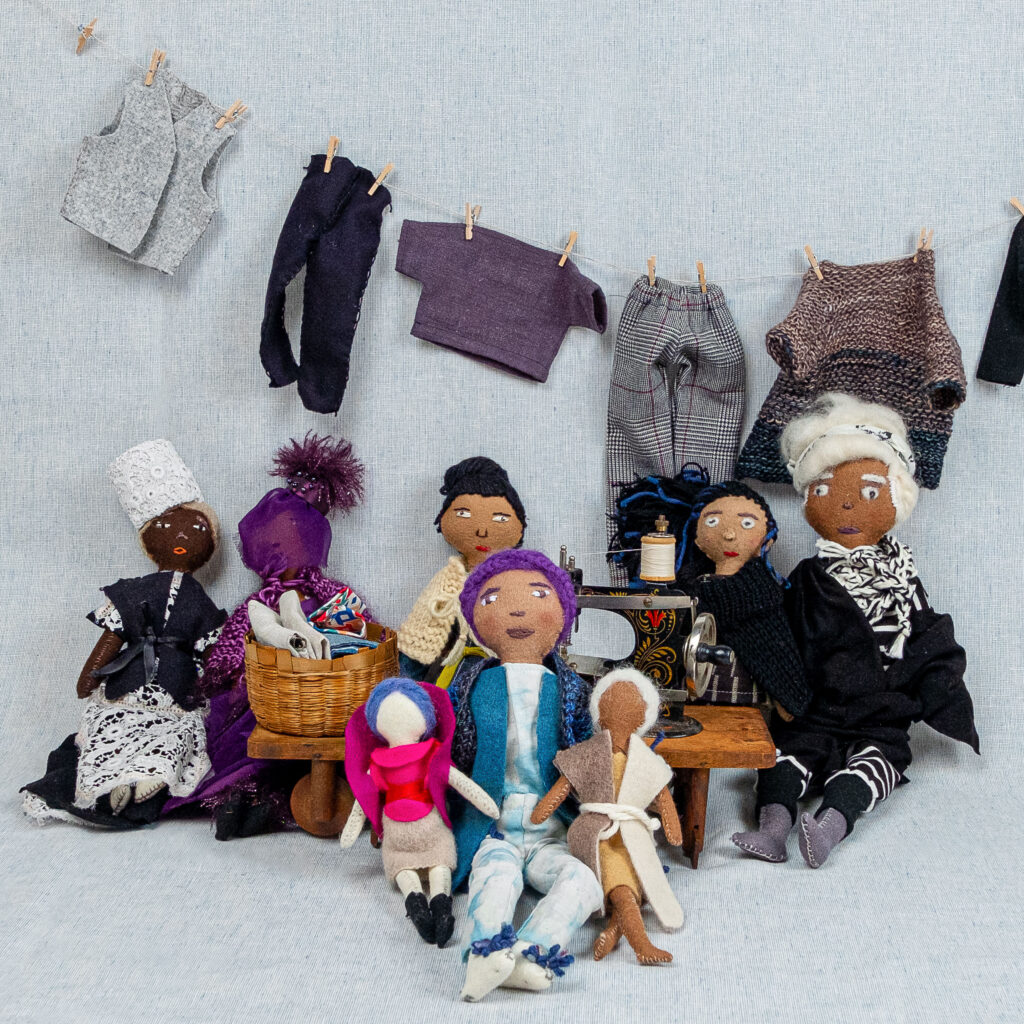
What is a doll? Is it something you play with? Collect? Display and protect?
In this two-part workshop, Wanett Clyde will take students through the process of creating felt dolls, from designing, stitching, and stuffing, to creating clothing and accessories. With an appreciation of the rich traditions of dollmaking by Black makers, Wanett will guide students through a class that weaves together the techniques and methods of dollmaking with the deep historical meaning this underappreciated art form carries.
The pattern taught in this class is inspired by and named after Wanett’s Alabama-born great-grandmother, Eunice. Eunice’s body is entirely hand-sewn with limbs attached using the classic button joint method. The pattern pays homage to the quickly assembled doll babies that Wanett’s ancestors created using only the remnants that they had on hand. Eunice can be customized in endless ways.
Dollmaking, like many textile art traditions, is greatly influenced by who the doll is made for, as well as who makes it. Students will leave class with the foundational skills needed to create dolls that honor their own “Eunice” – the people important to them who shape their own stories and connection to making.
Dates + Time
Thursdays, December 5th and 12th, 2024
4 – 6:30 pm ET
Cost
Virtual Class: $120
Virtual Class with Materials Kit: $180
Location
Zoom, access link will be sent out the day before the first class.
Recording
Classes will be recorded. A link to the recording will be emailed to all registrants following the final live session and available for one month.
Materials
A TATTER-curated materials kit is available for purchase with the class. Select “Virtual Class with Materials Kit” from the drop-down menu when signing up. This kit includes:
- Wool felt for body (3 skin tones)
- Wool felt for garments / accessories (assorted colors)
- Wool roving for hair (assorted colors)
- Fat quarters of fabric for garments / accessories (2 assorted colors)
- Yarn for hair (2 colors)
- DMC embroidery floss (6 colors)
- TATTER six-strand cotton floss (1 neutral color)
- Needles (hand sewing, embroidery, felting and doll needles)
- Vintage buttons
- Sew on snaps
- Polyfil
- Frixion heat erasable pen
- Fabric scraps
- Printed pattern pieces for doll body and garments
A full materials list provided by instructor Wanett can be found below.
Class Materials & Supplies
Materials for doll
- Holland Wool Felt in flesh tone of your choice
- Valdani embroidery cotton floss (or floss of your choice) to coordinate with the felt color
- Pins, pin cushion and quilting clips (last is optional)
- Scissors
- Forceps (optional, but handy for stuffing)
- Stuffing (Wanett uses polyester)
- Hand sewing needles and sewing machine
- Doll needle (or any large and long sewing needle) for button joins, must be able to pass through holes in buttons
- Button assortment for button joints (these should correspond to the size of the doll)
- Sewing thread and additional, assorted embroidery floss for garment sewing and buttonhole thread, or other strong thread like for upholstery for button joints
- Narrow elastic, small rounds of self adhesive Velcro and/or small sew on snaps
- Wool roving, wool felt or yarn in your hair color of choice
- Single needle style felting needle (necessary only for hair and facial features made with roving)
- Embroidery floss to coordinate with hair color, white & lip color
- Fabric marking pen/marker/chalk or traditional/colored pencil or oil pastels or blush for makeup and other marking needs
- Fray check (clear polish could work in a pinch) and fabric glue (if needed)
Materials for wardrobe - Scraps, yardage & wool felt for clothing and accessories
- Knitted garments can also be made with a variety of yarns! A fun way to use mini-skeins and small bits leftover from projects.
- Samples were primarily knit and crocheted with fingering or sport weight yarns on size 3 needles and a 3.25mm hook. These formulas are flexible. I might knit together a blend of yarns or use a large hook for an airier appearance.
- Accessories & other bits
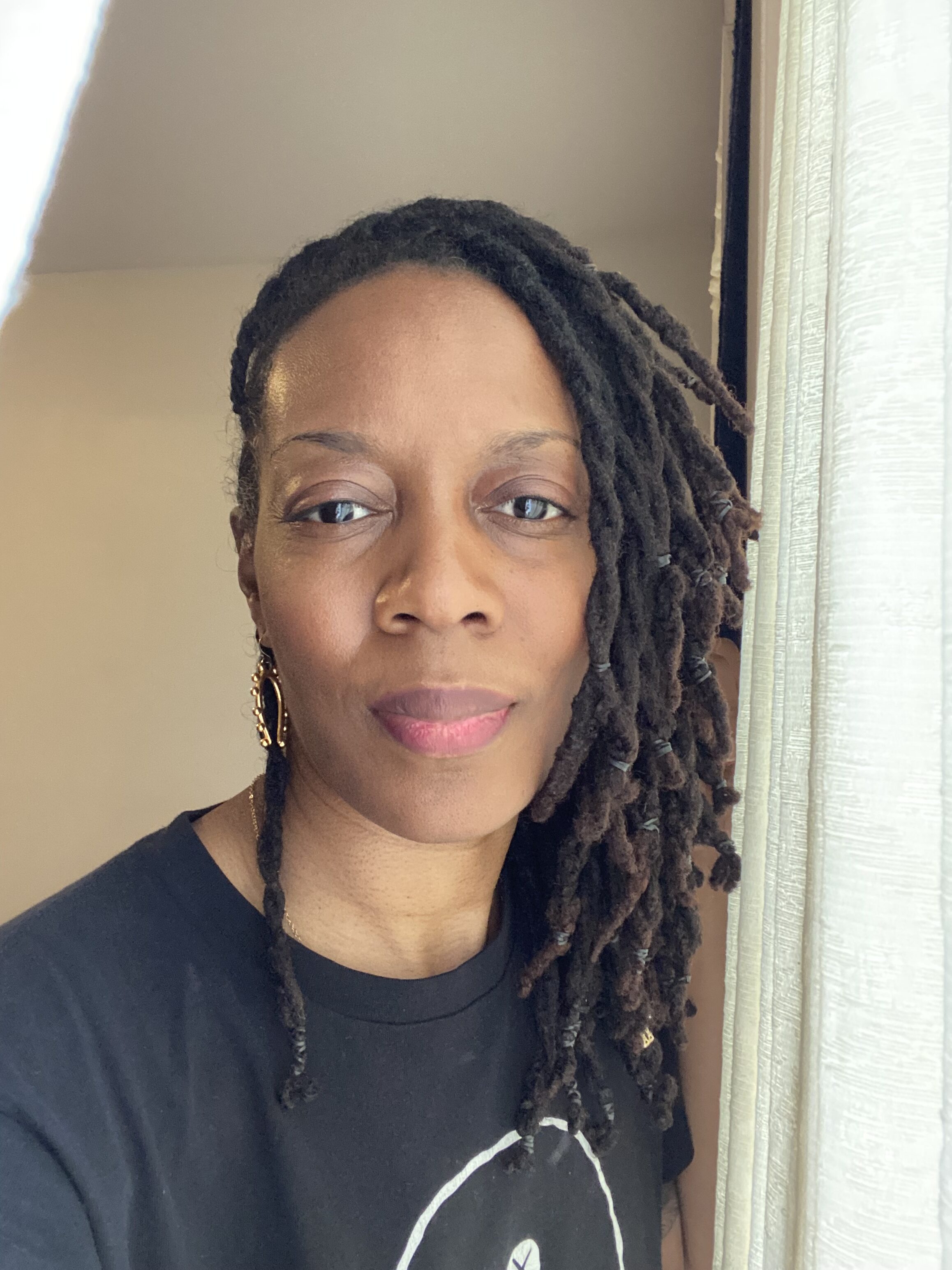
OUR TEACHER
Wanett Clyde is the Collections Management Librarian at CUNY’s New York City College of Technology, where in addition to managing the library’s collection she oversees the university archives. Her research seeks to explore the intersection of Black history and fashion history, drawing out under credited African-American contributors, their critical innovations and accomplishments, and other meaningful connections in the overlapping research spheres. As an active participant in the Brooklyn maker scene, she highlights the rich textile history of the Americas and fosters introductions between academics and fiber enthusiasts. Viewing art, textiles and Black maker history through an abolitionist lens has broadened her research horizons and forged new, fruitful partnerships in both her academic and personal research circles.
